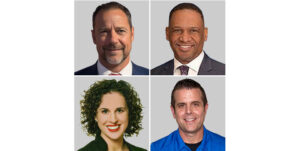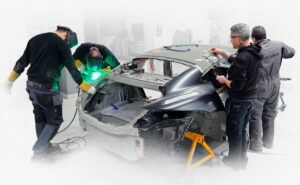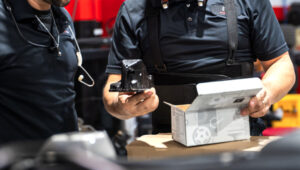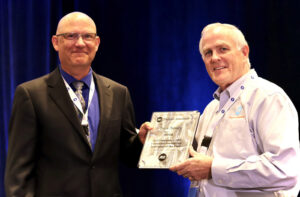“One positive thing I am beginning to see is that part shortages are forcing some shops to become more efficient with their appraisal process,” says Dave Luehr
If you’re like most body shops across the country right now, you’re probably struggling with parts shortages. One positive thing I am beginning to see in light of this very real challenge is that part shortages are forcing some shops to become more efficient with their appraisal process. (Editor’s note: Find Luehr’s original article here.)
Although parts shortages can be very frustrating to deal with daily, challenges like this have often forced improvement in a collision repair business. Some shops in the U.S. are creating better systems; in fact, the same ones that have been in place in the U.K. and even in some regions of Canada for a long time!

For example, they only accept complete parts orders from vendors or require all parts to be on hand and correct before entering a repair job into the production system. These are things that we should have been doing anyway. Shops are also taking the time to write a proper appraisal prior to ordering parts and scheduling repair jobs.
Although this is somewhat of a new concept for many U.S. repair facilities, U.K. shops and insurers have been relying on a detailed damage analysis process called VDA (vehicle damage assessments) for more than a decade. VDA is similar to what some shops are now referring to as “Advanced Repair Planning” or “Enhanced Appraisal.” It seems like common sense, especially during a worldwide supply chain issue.
I hear from many clients that certain car manufacturers are causing the biggest problems with parts delays. If this is the case, think carefully before accepting a low- or mid-severity repair job without properly analyzing the damage and pre-ordering parts.
This is contrary to what shops usually do, but we are not in usual times. As a result, we need to adjust our standard operating procedures (SOPs) to address today’s unfortunate circumstances. Although non-drives will likely get stuck at your shop from time to time due to back-ordered parts, consider how many repair jobs are currently stuck in your system because you didn’t take the time up-front to perform an enhanced appraisal.
Did you perform a scheduled, professional appraisal using OEM repair methods and complete temporary minor disassembly to identify 100 percent of the damage before you had the customer drop off the vehicle for repairs?
Did you demand from your dealer that you would not accept even one part from the purchase order until you had all the parts on one invoice?
Did you inform your customer that you would verify the appointment date after ensuring that 100 percent of the correct, undamaged parts would be there in your shop ready to start repairs when the vehicle was dropped off?
The following steps/tips can help your shop be more efficient and improve cycle time:
- Determine if a repair job is a good candidate for an advanced repair plan. A tool like Bodyshop Booster can be very helpful with this.
- Ask if the vehicle can be examined, including some minor disassembly, and be put back on the road safely until parts arrive. Before you even write the appraisal, Auto Techcelerators ADAS Co-Pilot tool can determine what kind of ADAS the vehicle is equipped with and how it could affect your ability to perform the appraisal.
- Schedule the appraisal for a low- to mid-severity repair and provide enough time to do a thorough job to get 100 percent of the damage analyzed. Keep in mind that 15 minutes usually isn’t enough.
- Check the OEM repair procedures prior to the vehicle arriving for an appraisal.
- Preorder the parts needed and demand that they are delivered on a single invoice.
- Once the correct parts are sourced and verified for a continuous workflow, go ahead and schedule the repair.
When challenges arise, successful businesses make changes and adapt. I encourage you to stay positive and look at the current issues we are facing in the collision industry in a new way.
Dave Luehr shares his experience from more than 30 years as a collision repair industry leader in leadership, lean and Theory of Constraints. Once the owner of a body shop himself, Luehr draws on the realities of a real world collision repair shop in his consulting, writing and keynote speeches.










Comments are closed.